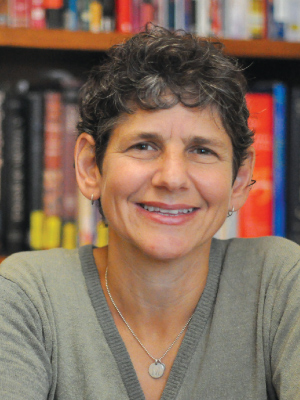
Photo by Patrick Verel
In a classroom populated with mostly white students, the white teacher constantly mixes up the names of the two black students, even though they look nothing alike. Is the teacher a racist?
As you consider your answer, think about how people exhibit what are known as “microaggressions,” inadvertent offenses to someone from a historically oppressed group.
Jane Bolgatz, Ph.D., associate professor of social studies education in the Division of Curriculum and Teaching at the Graduate School of Education (GSE), says they’re a lot more common than you might realize.
“The teacher isn’t trying to be offensive, but there’s a history of the dehumanizing of African Americans in this country. A student is probably thinking, ‘He’s short and kind of chubby, and I’m tall and thin. Why do you mix us both up? Because we’re both black?’ That happens frequently,” she said.
“That’s a microaggression because you didn’t mean anything by it, but it’s hurtful partly because it harkens back to a history of oppression.”
Talking with teachers about how subtle forms of racism and other forms of oppression can intrude into their classrooms is part of Bolgatz’s goal of preparing all children for success.
“One of the things that happens in classrooms is teachers have lower expectations of children of color,” said Bolgatz. “What I care about is teaching teachers to have the dispositions, knowledge, and skills to be able to move their students to where they need to be, so they can succeed academically.”
Part of it just has to do with teaching techniques, she said, “but part of it has to do with dispositions that are shaped by our cultures’ messages about race.”
In addition to microaggressions, Bolgatz promotes awareness of “stereotype threat,” which is the idea that when a stereotype matters to people, then they are likely to be distracted by the fear that their actions will confirm the stereotype.
Women taking high-level math courses, for example, are acutely aware of the perception that women are inherently bad at math. Unconsciously, worrying about confirming that stereotype can distract them, causing them, in a seemingly self-fulfilling prophecy, to not perform as well as they might otherwise.
Bolgatz, whose publications include “What Color was Joan of Arc’s Hair?: Developing Critical Literacy through Historical Thinking Skills,” in Critical Literacy as Resistance: Teaching for Social Justice Across the Secondary Curriculum (Peter Lang Publishing, 2008) and “Teachers Initiating Conversations about Race and Racism in a High school Class,” in Perspectives on Human Differences: Selected Readings on Diversity in America (Pearson Education, 2011), said there are proven techniques for overcoming this tendency.
“If you say to them, ‘This is math test, and it’s been proven that gender doesn’t impact results of this test at all—it’s just a test of your problem-solving skills,’ women will do just as well as men,” she said.
In other words, people who are threatened need to hear, “Hey, the stereotype is not going to be working here, get that out of your brain,” she said.
For the last two years, Bolgatz has focused her energies on the Clinically Rich Teacher Preparation Pilot Program, a $2.5 million grant from the New York State Education Department that she and the GSE won in 2011. The first cohort of teacher candidates graduated last year, and another cohort started in June. The grant places teacher candidates in high-needs schools, beginning with summer school. Bolgatz said the goal is to “develop teacher eyes.”
“Instead of waiting until September to have teachers do their student teaching and get their feet wet, through this program they’ve already been working with small groups of students and figuring out, ‘What does it mean to be a teacher?’” she said.
Bolgatz said the pilot program also fosters greater emphasis on communication between professors like herself and cooperating teachers who are running the classrooms in partner schools. Currently, professors instruct teaching candidates at the university and the candidates return to their schools, where a “cooperating teacher” oversees them.
“The idea here is that we’re helping to facilitate better communication between the cooperating teacher and the professor. I find out from the cooperating teacher that the student-teacher needs to use a certain kind of lesson plan format, and the teacher finds out from me that we have a new technique for doing small groups with students . . . together we can reinforce each other when the teacher candidate comes into my classroom.”
Teacher candidates in the pilot program agree to work for four years in high needs schools. Since many of the schools have majority black and Latino populations, attention to race is a must.
“My teacher candidates have to have a clue about what racial dynamics are going on there in order to have an impact on the academic achievements of their students,” she said.
